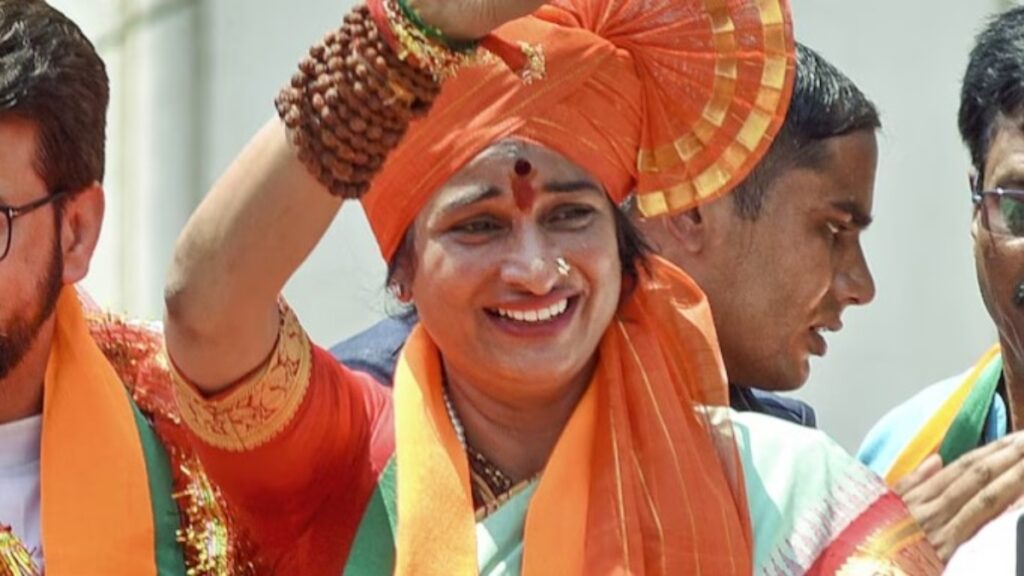In the political landscape of India, the emergence of new faces and contenders constantly reshapes the dynamics of power. In this context, the rise of Madhavi Latha, representing the BJP, as a potential challenger to Owaisi on his home turf signifies the evolving nature of electoral competition.
Asaduddin Owaisi, the leader of All India Majlis-e-Ittehad-ul-Muslimeen (AIMIM), has long been a dominant force in certain regions, particularly in Hyderabad and parts of Telangana. His party has often been seen as the voice of the Muslim community, advocating for their rights and interests. However, politics is never stagnant, and new players continuously enter the fray, aiming to disrupt established narratives and power structures.

Source:- India today
Madhavi Latha, representing the Bharatiya Janata Party (BJP), emerges as a formidable contender poised to challenge Owaisi’s influence. The BJP, known for its Hindu nationalist agenda, has been making strategic inroads into regions traditionally dominated by other parties. Madhavi Latha’s emergence as a potential “best bet” signifies the BJP’s concerted efforts to expand its footprint beyond its traditional strongholds.
Source:- BBC news
The dynamics of this potential face-off are multi-dimensional. On one hand, Owaisi’s established presence and appeal among certain communities provide him with a solid base of support. On the other hand, the BJP’s relentless campaigning, organizational strength, and broader national agenda could attract voters seeking an alternative to established regional players.
The significance of this emerging contest extends beyond mere electoral arithmetic. It reflects broader trends in Indian politics, such as the increasing polarization along religious lines and the BJP’s ambition to establish itself as a pan-Indian force. Additionally, it underscores the importance of regional dynamics and local issues in shaping electoral outcomes.
Ultimately, the electoral battle between Owaisi and Madhavi Latha represents more than just a clash of personalities; it symbolizes the ongoing transformation of India’s political landscape and the quest for representation and empowerment among diverse communities. As the campaign unfolds, it will be intriguing to observe how these contrasting forces navigate the complex terrain of identity, ideology, and aspiration.
Share your views in the comments

